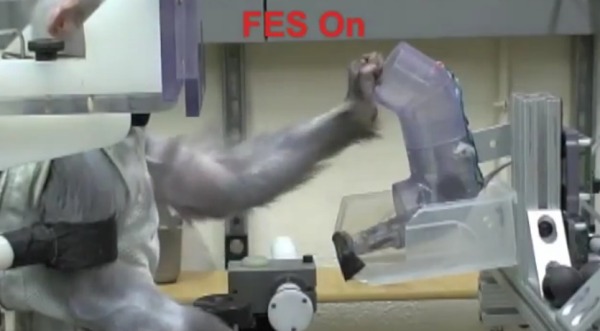Brain-Activated Muscle Stimulation Restores Movement After Paralysis

All neurological signals to operate your limbs go through the spinal cord, so most forms of paralysis occur due to damage of this area. But what if this was bypassed entirely, and your brain directly controlled these otherwise motionless limbs instead? This is a feat that researchers at Chicago's Northwestern University have been successful in carrying out.
This has been done by combining two different technologies to create a neuroprosthesis (prosthetically carrying neurological signals throughout the body). One part is implanted directly into the brain, used by researchers to detect the finite brain signals that generate limb movements: a brain-computer interface (BCI). This is paired with a functional electrical stimulation (FES) to deliver differing streams of electrical current to the paralysed muscles and mimic the natural movement that your brain intended that particular limb to do.
The BCI will interact with the FES directly, completely avoiding the spinal cord and restoring movement. Researchers tested this by injecting anesthetic into the lower arms of two monkey test subjects, effectively simulating paralysis in the wrist and hand, and having them attempt to throw a ball into a chute (they were trained to do this before the test began).

Without the stimulation, this wasn't possible at all; the monkey's were unable to pick up the ball. However, with the BCI and FES turned on, the subjects gained control over their muscles via the electrical stimulation, and managed to successfully grab and throw the ball into the chute. This was captured in the fascinating footage at the end of the article.
This isn't the first time that this sort of technology has been used, as the researchers have taken note of in their paper that got published in a recent issue of Nature; but this is the first time where the muscular movements were under direct control of the brain, and didn't require some form of manual triggering to activate. The degrees of separation in these stimulation diagnoses for paralysis have been reduced, and quite literally made more 'human,' as all movement now requires is thought.
Jason England
Source: National Institutes of Health, Nature

